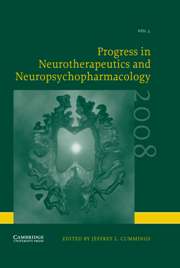No CrossRef data available.
Article contents
Optimal Dosing of Immunomodulating Drugs: A Dose-Comparison Study of GA in RRMS
Published online by Cambridge University Press: 22 October 2007
Extract
ABSTRACT
Background: Though indications of a dose–response for glatiramer acetate (GA) were apparent during early drug development and clinical testing, no formal dose-comparisons of GA had been conducted before the present study. Design/Methods: This multicenter, randomized, double-blind study compared the safety and efficacy of two GA doses: 20 mg/day, the currently approved dose, versus 40 mg/day. Relapsing–remitting multiple sclerosis (RRMS) patients with active disease (1–15 gadolinium-enhancing (GdE) lesions on screening magnetic resonance imaging (MRI) and ≥1 relapse in the previous year) were eligible. The primary outcome was change from baseline in total number of GdE lesions at 7, 8, and 9 months. Other outcomes included effects on relapse, changes in expanded disability status scale (EDSS) scores, and responder analyses. Results: Benefits of the 40 mg GA dose versus the 20 mg dose on GdE lesions were evident by month 3. Additionally, significant advantages of the 40 mg dose were observed for time to first relapse and proportion of relapse-free patients. There was a trend for better outcomes with 40 mg/day GA for the primary efficacy measure, but the difference between doses was not statistically significant. Both GA doses were safe and similarly well tolerated. Interpretation: A 40 mg/day GA dosage may be more effective than the 20 mg/day recommended dosage for reducing disease activity, and appears to have an earlier onset of action. A large, phase III study is underway to confirm these findings.
- Type
- Research Article
- Information
- Progress in Neurotherapeutics and Neuropsychopharmacology , Volume 3 , Issue 1 , January 2008 , pp. 137 - 151
- Copyright
- © 2008 Cambridge University Press




